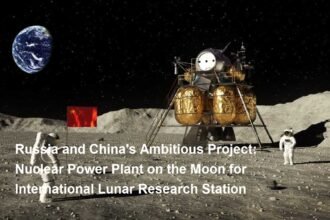Understanding Kondratieff Cycles
The definition of Kondratieff Cycles or Kondratiev Cycle refers to the economic theory introduced by the Russian economist, Nikolai Kondratiev. This concept describes how world economic growth experiences long cycles with a duration of around 40 to 60 years, consisting of periods of growth and decline. This cycle is broken down into two phases, namely the expansion or rising phase which is characterized by increased investment, productivity and economic growth and the contraction or falling phase which is followed by economic downturn and technological change. Kondratieff Cycles includes three main components, namely technological innovation, investment in infrastructure, and changes in industrial and socio-political structures. Technological innovation contributes to increasing productivity and driving economic growth. Investment in infrastructure creates new jobs and allows for more efficient exchange of goods. Changes in industrial structure involve a global scale shift between labor-intensive industries and capital-intensive industries.
The economic elements involved in the Kondratieff cycle include factors such as savings, loans, inflation, private investment, bad credit, and monetary policy. During an upward cycle, savings increase as taxes grow. During this period, loans increased as a result of increased investment, while low inflation policies encouraged economic growth. However, in the midst of a down cycle, savings decline due to uncertainty and bad credit and investment shows a downward trend. Apart from these economic elements, the Kondratieff cycle is also influenced by political conditions and government policies. Changes in trade policy or trade restrictions can affect the dynamics of the Kondratieff cycle. International conflicts or wars also impact the cycle by causing disruptions to global trade and capital flows. In this context, changes in trade policies or trade restrictions can influence the dynamics of the Kondratieff cycle. International conflicts or wars also impact the cycle by causing disruptions to global trade and capital flows. In this context, the government’s role is very important in increasing economic stability through appropriate fiscal and monetary policies, as well as creating economic conditions that are conducive to private sector growth and investment in infrastructure.
History of Kondratieff Cycles
The history of Kondratieff Cycles begins with the discovery by a prominent Russian economist, Nikolai Kondratieff at the beginning of the 20th century. Kondratieff, also known as Nikolai Dmitriyevich Kondratiev, is a scientist who has special attention to long-term aspects of economics. The main idea of this theory is the existence of long-term economic cycles or what are often referred to as “Kondratieff waves”. This wave covers an economic cycle in the range of 50-60 years, where in one odd number there are phases of growth and decline. The background to this discovery is based on an analysis of economic data from various major industrial countries from the 18th century to the early 20th century. Kondratieff used the data to identify recurring patterns in economic growth and saw that these long-term cycles were universal and affected all industrialized countries in the world. This discovery became known as the Kondratieff Cycles and became the starting point for theories of future economic development.
The influence of the Kondratieff Cycles theory was enormous on economic thought during the 20th century, especially in the period between the First World War and the Second World War. Scientists and economists from various schools of thought began to debate the truth and relevance of Kondratieff’s theory in explaining global economic conditions at that time. In this context, this theory generates productive debates about how governments and international institutions can formulate effective economic policies to anticipate the cycles of growth and decline predicted by Kondratieff. Despite the debate surrounding this theory, there are many studies that use the Kondratieff Cycles analysis as a basis for studying global economic growth patterns and formulating development strategies. Until now, Kondratieff’s theory is still used in a number of analyzes to examine long-term economic trends in various countries and industrial sectors. Although many economists now offer various alternative theories, Kondratieff Cycles still have a significant influence in long-term analysis and economic strategic planning. By understanding this cycle, policy makers and companies can be more effective in managing risk, making investment decisions, and developing innovation to remain competitive in the global market.
Phases in Kondratieff Cycles
The expansion phase is the initial stage in the Kondratieff cycle where economic activity experiences acceleration and growth. During this phase, investment and consumption increase, while technological innovation and infrastructure develop. As the economy grows, employment opportunities and per capita income also increase. The upgrading phase usually lasts for decades and creates an atmosphere of optimism among entrepreneurs, investors, and workers.
After the increase phase, Kondratieff Cycles entered a slowdown phase. This stage is characterized by slowing economic growth because the market begins to saturate and investment levels decline. As a result, there is a decrease in demand for products and services, which results in a decrease in commodity prices. This slowdown phase affects economic sectors which then causes a slowdown in employment and an increase in unemployment.
The contraction phase is the stage when the economy begins to experience a serious setback or a larger crisis. The economy shrinks as a result of falling investment, disappearing jobs, and companies going bankrupt. In all industrial sectors, production fell drastically in response to market shortages and investors taking losses. This contraction phase can last several years and have a negative impact on social, political and economic conditions.
Finally, the economy began to enter the recovery phase after the contraction. This phase includes a period of economic reconstruction and restructuring, during which companies begin to revive and new ones emerge. Investment is increasing again and new jobs are starting to become available. During this recovery phase, the economy experienced steady growth along with technological innovation and adaptation to market changes. This process continues until the economy enters the improvement phase again in the next Kondratieff cycle.
Examples and applications of Kondratieff Cycles in economic history
The first cycle (1760-1849) involved the earliest industrial revolution. This period was marked by the invention of the steam engine, which transformed the textile industry and changed the way people worked. This created an explosion of productivity and technological innovation, much of it focused on increasing production capabilities. As demand continues to increase, the economy grows rapidly before finally facing a slowdown and crisis.
In the second cycle (1850-1896), the world saw a significant expansion of transportation infrastructure, especially in the construction of railroads. The steel and chemical industries expanded rapidly during this period, leading to increased exports and international trade. However, most important was the invention of the telegraph which allowed information to be conveyed quickly around the world, supporting the development of a new global financial system.
The third cycle (1896-1945) was controlled by the development of electrical technology and the emergence of the automotive industry. Transport infrastructure underwent a major transformation with cars and highways reaching rural and urban areas, to crowd the roads with motorized vehicles. As industrial electrification progresses, more jobs are created in the electricity and transportation sectors, ultimately influencing social and political change.
The fourth cycle (1945-present) covers the development of information and communication technology. After World War II, the invention of the transistor and the microprocessor made computers more affordable and brought about the digital revolution. During this period, the internet was born, changing the way we communicate, work and conduct business. As this cycle continues, the rate of innovation shows no signs of slowing and we can anticipate a new wave of technology that will shape the economy and society of the future.









